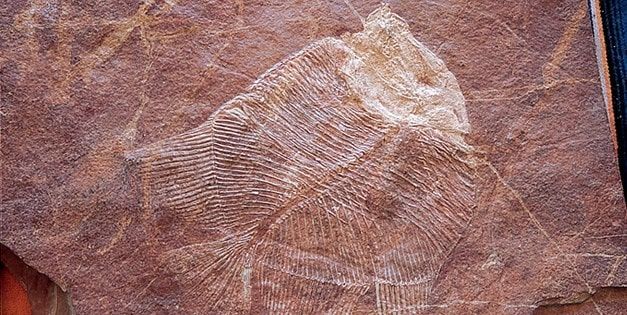Tlayúa Quarry, the paleontological complex in Tepexi de Rodríguez
The Tlayúa Quarry is a small fossiliferous site located in the town of Tepexi de Rodríguez, in the heart of the Mixteca region of Puebla, Mexico.

In the town of Tepexi de Rodríguez, located in the heart of the Mixteca poblana, is the Tlayúa Quarry, a fossiliferous site unique in the world for its large number of perfectly preserved fossils belonging to the Mesozoic era of the Cretaceous period, 100 million years ago.
The discovery of the remains of diverse organisms stamped on the stone slabs began when Don Miguel Aranguthy Juárez, heir to the site, took on the task of extracting the slabs to market them. The flagstones are rocks of very fine texture, composed of calcium carbonate used for floors and facades. Given the surprising finding, he informed the state authorities, and years later the discovery of these fossils was published. Later, in 1981, the Institute of Geology of the National Autonomous University of Mexico (UNAM) began the first paleontological explorations in the area.
The Museum of Paleontology has a record of fossils extracted from the Tlayúa Quarry. Among the groups of organisms that make up this collection, the invertebrates include ammonites, sponges, decapods, annelids, sea cucumbers, stars, and sea fans; among the vertebrates are pycnodont fish, macrosemids, aspidorhynchids, and recently the first coelacanth was discovered in Mexico. Turtles, crocodiles, lizards, and flying reptiles have also been found.
The importance of recording and studying fossil animals or plants lies in being able to know the origin of our species, of life on the planet, its evolution, and its characteristics. The investigation of these beings and their environments, which have disappeared millions of years ago, can contribute to understanding the distribution and behavior patterns of current species and ecosystems.
The preservation of organisms in geological time is largely limited to the hard parts of animals or plants. At Tlayúa, the preservation of the soft parts of organisms such as annelids, some echinoderms, and the muscle tissue of some fish was probably possible due to the absence of decomposing organisms and the existence of very fine-grained sedimentary material where the organisms were buried. Due to the type of fossils and sedimentary evidence, it is considered that the area possibly corresponded to a lagoon associated with a coral reef.
Over time the calcareous muds were formed in overlapping horizontal layers, and between them, the organisms were preserved. By studying the layers of the quarry as well as the fossils, it is possible to gain a clearer understanding of the predominant ecological and climatic factors of that era in that region (in what is now central Mexico), as well as the possible phenomena that gave rise to the burial of the organisms (storms, subsidence, volcanism).
The Tlayúa Quarry in Tepexi de Rodriguez, Puebla, is one of the fossiliferous deposits in the world with an excellent state of preservation of the organisms.
Currently, the commercial exploitation of the Tlayúa quarry is very artisanal. Hand tools are used -mainly hammers, hammers, and chisels- to avoid damaging or fracturing the rocks that contain fossils. The collection of fossils is carried out in coordination with the excavation work in the quarry. It is a joint task between the quarry workers and the Institute's paleontologists and geologists, to distinguish the pieces, cut them, and separate them properly. Once the slabs have been extracted, the layer they come from is marked and they are identified with an inventory number and then transferred to the Institute where the process of curing, identification, and description of the organisms will continue.
This collection of fossils is the most extensive and the only one in the country properly catalogued. It is subdivided in turn into the type collection, formed by fossils that meet certain characteristics or aspects of scientific interest; the geographic reference collection groups fossils collected in the same locality, arranged according to the states of the Mexican Republic; the collection of foreign material, which aims to support paleontological research. The collection of foreign material, which has the objective of supporting paleontological research utilizing fossils already known in other parts of the world, and finally, the collection of recent material for comparison, which has the same function as the previous one, although in this one, instead of fossils, there are current specimens related to the fossils under study.
Beyond the scientific knowledge emanating from paleontological research in the region of Tepexi de Rodríguez, there is a range of cultural elements that people can and should have access to. Fossils are one of the important elements that, together with the anthropological, archaeological, and historical heritage and fascinating vegetation and fauna, represent a special attraction of the Mixteca poblana that could well be the reason for the development of an interesting cultural tourism project that would contribute to the development of the region.
By Jacinta Ramírez, Source: Biodiversitas (7) Mexico: CONABIO




